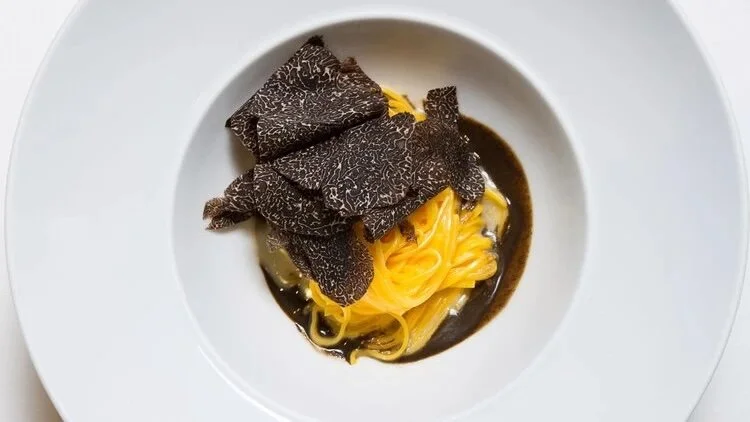Types of Truffles
There are hundreds of truffle species worldwide, but only a few are highly prized for culinary use. These truffles differ in terms of seasonality, flavour intensity, and value, with white and black winter truffles being the most sought-after.
Did you know that ALL truffle oil is entirely synthetic? Read which chemical is used, here
“Whosoever says truffle, utters a grand word, which awakens
erotic and gastronomic ideas...”
BLACK WINTER TRUFFLES
Easily identified by its dark, black centre and network of white veins running through it, this is the truffle referred to as ‘black gold’ and is the most prized and valuable French truffle. Developed on the roots of slow-growing trees, such as oak and hazel, Tuber melanosporum is the botanical name but they can sometimes be referred to as ‘Perigord truffles’, after the region in France where truffles grow in the wild. Known for their nutty, delicate yet intricate flavour, black winter truffles are only available in the European winter time (from early December to late January).
These grow during the European summer time (not to be confused with summer truffles, see below) which is winter in Australia. This ‘New World truffle’ with its inverse harvest time has helped unlock truffles’ inaccessibility, beyond the usual seasonality that has helped shape their rarity. The Australian truffles are also Tuber melanosporum.
AUSTRALIAN TRUFFLES
CHINA TRUFFLES
Tuber indicum is a more affordable truffle with less intent flavour, often found in Asia. It’s sometimes used as a lower-cost alternative to European black truffles.
Often used as a substitute for black winter truffles and as the name suggests, they are grown in (European) summertime. Tuber aestivum are paler in colour than the black winter truffles, with a less intense aroma, a trait they share with the Burgundy truffle, (tuber uncinatum) which they are not dissimilar to. Summer truffles are harvested May to August. A large part of their market is now shared with the Australian truffle.
SUMMER TRUFFLES
Native to northern Italy, especially in the Piedmont region, the white Italian Alba or Piedmont Truffle, Tuber magnatum, is also harvested during the winter and can never be cultivated. Be aware of the ‘whiteish truffle’ (Tuber borchii) which is a similar species, although smaller and less aromatic.
WHITE TRUFFLES
If we have held your attention this far down the page, you may be interested in our truffle-related reading list - click here for details







